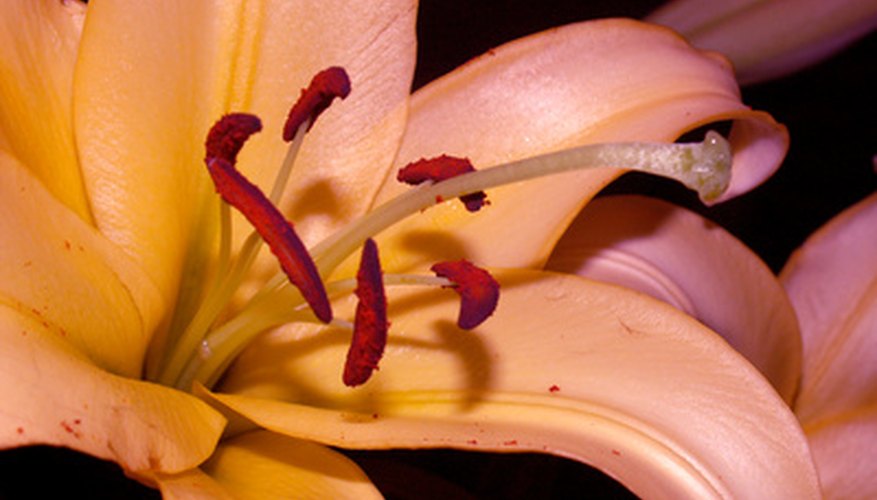The lily is a beautiful flower known for its pollen's ability to stain just about anything, it's bulb's edible qualities, and its toxicity to cats. Garden websites, Internet forums and budget blogs are full of tips and tricks on how to get lily pollen stains out of carpet, table cloths, clothes, and even wood. Techniques include rushing to the dry cleaners to using vinegar. The lily's ability to create stains can be a nuisance, but it does have some uses.
- The lily is a beautiful flower known for its pollen's ability to stain just about anything, it's bulb's edible qualities, and its toxicity to cats.
- Garden websites, Internet forums and budget blogs are full of tips and tricks on how to get lily pollen stains out of carpet, table cloths, clothes, and even wood.
Fighting Gun Crime
Believe it or not, scientists in the U.K. have perfected the technique of tagging bullets with specks of pollen from the lily flower. The tag simply consists of the natural pollination's astonishing adhesive power. Since 2008, scientists have been trying to see if they can also tag knives.
Paint
Lily pollen comes in a variety of vibrant yellows, oranges and ambers. The pollen of some lilies, like the black heart lily, flakes into a dry compound instead of an adhesive. By mixing the pollen with some water you can create your own natural watercolour paints.
Dye For Fabrics
Given the lily's proven ability to create stubborn stains, you can use it to dye fabrics. Simply mix well with water and dip plain white fabric in the mixture. Or, you can use a paint brush to fill in patterns and designs that you may want.
